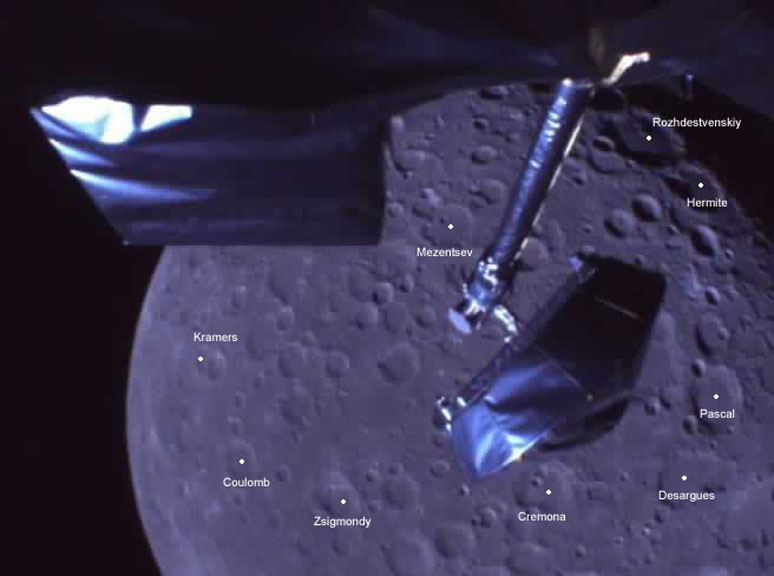
image by Japan Aerospace Exploration Agency; labeled by Jim Mosher
Although the Kaguya/Selene orbiter is not scheduled to take official images of the Moon until it gets in its science orbit later this month, a few technical images are now available. These were taken with a small camera specifically included to monitor the high-gain antenna, and just happen to show the Moon in the background. Jim Mosher has identified enough of the craters to show that we are looking at the extreme northwest limb of the nearside and around to the farside. The north pole is in shadow just beyond Hermite and Rozhdestvenskiy. Cremona is on the 90° W longitude meridian at 67° N; Pythagoras is just off the bottom right corner of the image. This area of the farside lacks the distinctiveness of maria, and none of the craters are exceptionally fresh - once again, I think how lucky we are that the nearside is the part we see! Rather than saying this is the first view with a new scope, it should be with a new scope’s finder. The larger cameras will capture wonderful stereo images (I hope!) with 10 m resolution, and a high definition TV camera will send touristy snaps of the surface. What I can’t understand is how the new scope could be out of the cartoon this long and not have images taken through it! And I had hoped the TV camera would have captured the growing Moon as Selene left Earth and gradually approached lunar orbit. But I am happy to sit back and wait for the beginning of a whole new era of lunar wonderment.
Chuck Wood
Related Links:
Rükl plate Libration Zone I
Now you can support LPOD when you buy ANY book from Amazon thru LPOD
COMMENTS?
Click on this icon File:PostIcon.jpg at the upper right to post a comment.



